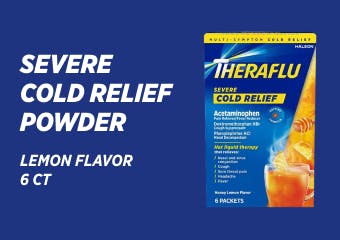A stuffy nose may not be painful, but it certainly isn’t a fun thing to deal with. Going through an entire box of tissues in a day and feeling congested again after a couple of minutes can be an annoying process. Stuffy noses, persistent nose blowing and talking with a nasal voice can be irritating when you have to deal with them in public or around groups of people. Getting rid of a stuffy nose is possible, but the first step in clearing your nose for good is to identify what’s causing it. Read more to learn about the different causes of stuffy noses and how to unclog them.
What Causes a Stuffy Nose?
You might get a stuffy nose when something irritates it, causing inflammation, swelling and extra mucus production.1 This can make it difficult to breathe through your nose.1 Most cases go away within a week.2
Some likely causes of a stuffy nose include infections like the common cold, flu or a sinus infection, like sinusitis.1 Going to the doctor to get a physical examination of your nose, ears and throat is the best way to determine what is causing your stuffy nose.1 If you have a stuffy nose but don’t feel sick, it may be caused by another condition or external factor.
Other causes of stuffy noses include allergies (or exposure to dust, pollen or pet dander), airborne irritants like smoke and paint fumes or pregnancy.1
Can a Stuffy Nose Lead to More Serious Problems?
A stuffy nose can make it more difficult to feed babies.1 Having a stuffy nose feels unpleasant, but should resolve in a few days.1 See your healthcare provider if your stuffy nose lasts for more than 10 days.1
While blowing your nose is relatively safe, blowing too hard can lead to other problems, like nose bleeds, popping ears and painful ear infections.3
Nose bleeds are caused when a vessel is exposed to dry air and you add pressure to it by blowing your nose.3 Fortunately, nosebleeds often resolve on their own.3 Ear infections are rarely caused by nose blowing, but swelling in the nose causes the connection between the ear and the nose to shut.3 It’s also possible (but very rare) to rupture your eardrum by blowing your nose too hard.3
A stuffy nose may lead to a sore throat.4 Breathing from your nose helps keep moisture in your mouth and throat, but nasal passages that are not clear can make it difficult to breathe from your nose.4 A stuffy nose can make you breathe from your mouth, which can lead to sore throat pain.4
How to Unclog Your Nose
There are quick ways to manage your congestion while you wait for your nostrils to clear up for good. You can get relief from your clogged nose by applying a warm, moist washcloth to your face several times a day as needed.2
When applying a warm washcloth, make sure the fabric is not too hot so that you don’t burn your face. Inhaling steam 2 to 4 times a day or having a humidifier in your home can also help with your stuffy nose.2 An easy way to breathe in some steam is to sit in the bathroom while running a hot shower.2
Humidifiers are a great way to relieve stuffy noses and other respiratory problems but be sure to always check the humidity levels and keep your humidifier clean.5 The way you sleep can also affect your stuffy nose. Stuffy noses can get worse if you lie down, so try to keep your head slightly elevated when you sleep.2
More At-Home Remedies for Relieving a Stuffy Nose
A simple remedy to unplugging your nose is to try a nasal wash.2 You can purchase a saline spray or make your own by mixing 1 cup of warm water with ½ teaspoon of salt and a pinch of baking soda.2 Drinking plenty of fluids can also help clear your nose and keep you hydrated.2
If your stuffy nose is caused by allergies, make sure you talk to your doctor, remove yourself from the source of the allergy and use antihistamines to relieve congestion.2 Other cases can be relieved with nasal decongestants.2
You can also take medicine for a stuffy nose.2 When it comes to stuffy nose medicine, you have plenty of options. Look for decongestants, like Daytime Theraflu-D Flu Relief Max Strength + Nasal Decongestion Syrup, which is available behind the counter at your pharmacy, to get relief from your stuffy nose. Theraflu-D contains pseudoephedrine, the most powerful oral nasal decongestant available, which can help clear your stuffy nose.
Another way to unclog your nose is with a nasal mist. Try Theraflu Severe Congestion Relief Nasal Mist to unblock severe congestion. Featuring a breakthrough design with a one-press button, Theraflu Severe Congestion Relief Nasal Mist is comfortable to use and has a 50% shorter nozzle vs. the leading nasal mist. The easy, one-thumb button triggers a controlled dose of ultra-fine mist that unblocks in seconds. For comfortable relief plus cooling, Theraflu Severe Congestion Relief Nasal Mist + Cooling is a great option.
Having a stuffy nose can be annoying, but with the proper care and treatment, you can go back to breathing freely again. To learn about other cold and flu symptoms, visit the Theraflu Symptoms Hub.





